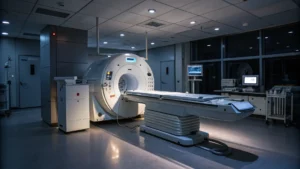Cancer remains one of the most formidable health challenges worldwide, with millions of new cases diagnosed annually and a staggering impact on societies and economies. In the quest to combat this global crisis, advancements in radiation therapy technologies, such as proton therapy, have emerged as a beacon of hope, offering new possibilities in cancer treatment.Understanding Proton TherapyProton therapy is a type of radiation treatment that uses protons rather than traditional X-rays to treat cancer. This method allows for a more precise delivery of radiation to the tumor site, minimizing damage to surrounding healthy tissues. This precision is particularly beneficial for treating complex and sensitive areas, such as the brain, spine, and pediatric cancers.Unlike conventional radiation therapy, which disperses energy along its path, proton therapy allows for the maximum energy to be deposited directly in the tumor with little exit dose. This characteristic significantly reduces the risk of side effects and complications, making it an appealing option for many patients.Advancements in Radiation TechnologyThe field of radiation therapy has seen remarkable advancements over the past few decades. Technologies such as intensity-modulated radiation therapy (IMRT), image-guided radiation therapy (IGRT), and stereotactic body radiation therapy (SBRT) have enhanced the precision and effectiveness of cancer treatments. However, proton therapy stands out due to its ability to conform more closely to the tumor shape, offering significant advantages in sparing healthy tissues.Recent innovations in proton therapy include pencil-beam scanning, which allows for even more precise targeting of tumors, and adaptive proton therapy, which adjusts the treatment in real-time based on changes in the patient’s anatomy. These advancements further enhance the effectiveness of proton therapy, providing better outcomes for cancer patients.Global Impact and Accessibility ChallengesWhile proton therapy and other advanced radiation technologies offer promising prospects for cancer treatment, their availability remains limited. High costs and the need for specialized equipment and facilities mean that access to these technologies is often restricted to well-funded cancer centers in developed countries.Addressing the global cancer crisis requires not only technological advancements but also efforts to make these treatments accessible to patients worldwide. Initiatives to expand infrastructure, reduce costs, and train healthcare professionals are crucial steps toward making proton therapy a viable option for more cancer patients globally.ConclusionAs the global cancer crisis continues to unfold, advanced radiation therapies like proton therapy play a pivotal role in improving patient outcomes. The precision and effectiveness of these technologies offer new hope in the fight against cancer, demonstrating the critical need for continued innovation and global access initiatives.By investing in the development and dissemination of these advanced therapies, we can make significant strides in managing the cancer burden and improving the quality of life for patients around the world. The future of cancer treatment lies in harnessing the potential of these cutting-edge technologies, making it imperative to integrate them into healthcare systems globally.
The Role of Advanced Radiation Therapy Technologies in Cancer Crisis
Cancer remains one of the most formidable health challenges worldwide, with millions of new cases




